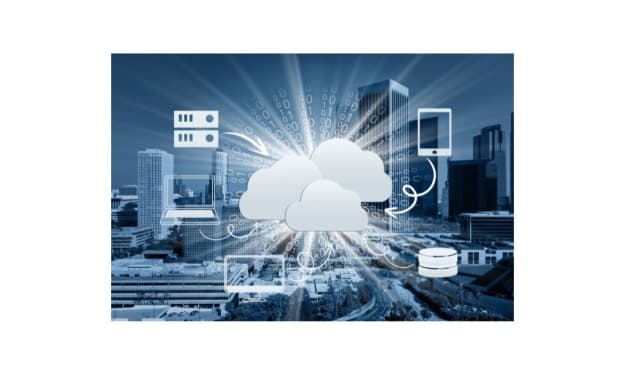
Do you have an old laptop motherboard you need help with? Is a desktop computer too big for your needs? Don't worry; you can still use it on a desktop computer! This article will show you how and why it might be a good idea.
What is a Desktop Computer?
A desktop computer is a personal computer designed for use at a desk or other location rather than being carried around. Desktop computers are generally more powerful and expensive than laptop computers, with larger screens, faster processors, and more memory. They are also typically used for tasks that do not require the mobility of a laptop computer, such as photo editing or designing graphics.
A desktop computer is a personal computer that typically has a larger, more powerful processor and graphics card than a laptop. They're also typically more expensive and can be used for more intensive tasks like video editing or 3D rendering. Desktop computers are great for everyday use, but they need the portability of a laptop.
A desktop computer is typically a larger and more powerful laptop version. They come with more storage and processing power, allowing them to handle more intensive tasks than laptops. Desktop computers are also more common in offices, schools, and businesses, where they're used for jobs like office work, browsing the internet, and playing games.
Desktop computers are generally easier to upgrade than laptops. Laptop motherboards are explicitly designed for notebooks, and adding a new card or chip to one may not work on a desktop computer. Desktop computer cases usually have more room than laptops to fit extra cards or drives. And many desktop computers come with built-in ports for connecting additional hardware, such as graphics cards or external hard drives.
Desktop computers can be expensive, but they're worth the investment if you use them for tasks like office work or heavy gaming.
Components of a Desktop Computer
A desktop computer comprises many different parts, each with a specific function. The features of a desktop computer include the CPU, motherboard, storage devices, graphics card, and peripherals.
A desktop computer typically has a central processing unit (CPU) that handles all the computations required to run the operating system and applications. Many modern CPUs are multiple cores, which allows them to perform several tasks simultaneously.
The motherboard is a desktop computer's primary component and contains all the electrical connections between the other parts of the computer. Most motherboards have at least one expansion slot to add additional hardware, such as a graphics card or hard drive.
Storage devices are crucial components of any desktop computer. A desktop computer typically has one or more hard drives to store your data and an optical disc drive or USB ports for connecting external storage devices.
Graphics cards are important because they allow you to view images and videos on your monitor. Graphics cards come in different types: ones that are designed for gaming, those that are designed for rendering 3D images, and those that are intended for general computing tasks such as word processing or spreadsheet work.
Peripherals are also essential components of a desktop computer. Peripherals include mice, keyboards, printers, scanners, digital cameras, and sound cards.
How a Laptop Motherboard Works
A laptop motherboard is a complex circuit board that contains the essential components for powering and controlling your computer.
The motherboard provides power to all of the other components and connects them. It also handles communication between the different parts of the computer, including the CPU, memory, storage devices, and peripherals.
Common laptop problems include broken or damaged motherboards, which suddenly cause your computer to stop working. If you're experiencing these issues, taking your laptop to a repair shop and having them replace the motherboard is essential.
A laptop motherboard is specifically designed to work with several other components, including the CPU and RAM. As such, it typically contains fewer ports and slots than a desktop computer's motherboard.
When you upgrade your laptop's motherboard, it's essential to ensure that all the other components on the system are compatible. For example, if you're replacing the CPU or RAM, you must ensure those new parts also fit onto the new motherboard.
If you're using a laptop motherboard in a desktop computer, check the compatibility list provided by your hardware manufacturer before making any purchases. And always be prepared for potential complications - upgrading your laptop's motherboard may be more complex and complex than you might think!
A laptop motherboard is specifically designed for laptops and is not always compatible with desktop computers. Laptop motherboards typically have different connectors and ports than desktop motherboards and may not have the same components.
Some laptop motherboards can be used in a desktop computer by replacing the motherboard. You must find a compatible motherboard and return the original one with the new one. Be sure to follow the instructions that came with the new motherboard.
If you do not want to replace your laptop motherboard, or if you do not have a compatible one available, you can use a docking station or port replicator to connect your laptop to a desktop PC. This will allow you to use many of the features of your computer on your desktop PC, but it will only allow you to use some of the ports on the laptop.
Can I Use a Laptop Motherboard on My Desktop Computer?
Many desktop computer users are surprised to learn that a laptop motherboard can be used on their computers. Most laptop motherboards have more ports and connectors than desktop motherboards. The ports and connectors on a laptop motherboard make it compatible with many devices, including USB drives and other peripherals.
For a laptop motherboard to work in a desktop computer, you must remove the battery and main memory card if your laptop has them. You must also disable your computer's security features, such as password protection. After making these changes, you can install the motherboard on your desktop computer following the manufacturer's instructions.
A laptop motherboard can be used on a desktop computer, but some restrictions exist. Most laptops have a limited number of ports, so you may only be able to use some of the ports on a desktop motherboard.
Laptop motherboards also often have different power requirements than desktop ones, so you may need to buy a power supply that works with the new motherboard. You must also ensure that your laptop's bios are updated for the new motherboard and that your operating system is compatible with the new hardware.
About the Creator
Gurugets
Technology refers to the application of scientific knowledge for practical purposes, such as in the design, development, and use of machines, equipment, and systems.






Comments
There are no comments for this story
Be the first to respond and start the conversation.